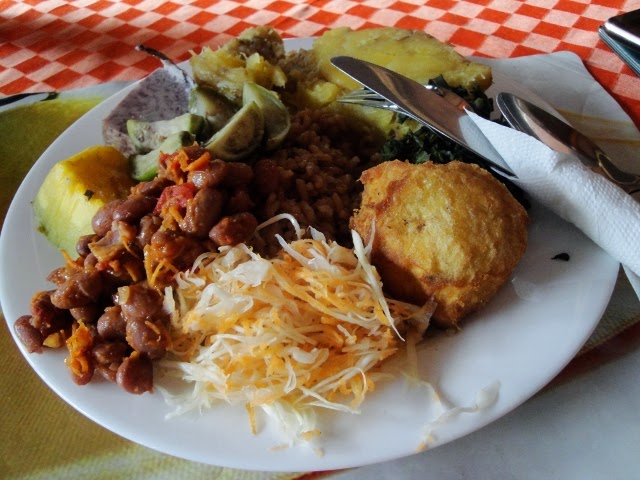This will be the last post solely about Uganda, but I know everyone loves thinking about food so I couldn't skip it. I though the food would would be pretty
similar to Rwanda's
Meals
I
completely screwed this order up. Boths are the sauces you get for entrees, so
I bought two entrees, and then I was expecting cassava bread, but instead I
just got boiled cassava roots. So they
ended up bringing me rice also, likely out of pity for the stupid bazungu. Nonetheless, I got fish! Which I hadn’t had
in a few months.
I will go clockwise starting at the 12 o’clock position:
12:00 Eggplant (look like little lime things)
1:00 Bananas (starchy like in Rwanda, but they wrap chopped
bananas in banana leaves and steam it in a pot)
3:00 Dodo (green, under the silverware)
4:00 Fried shredded potatoes (looks like a hush puppy)
6:00 Cabbage (orange and white, looks like cheese)
8:00 beans
9:00 Pumpkin (delicious! Orangey, yellow)
10:00 Sweet potato (purple for some reason)
CENTER Rice pilau (nice change from the Rwandan rice which
is always plain white)
Drinks
Pineapple
soda, which is delicious. They don’t have this in Rwanda. It provides 56% of your daily sugar!
Of course I can't go on a trip without Fanta!
Snacks for the road
I’m
still not sure what it was. Kind of like
garlicky cereal?
Banana chips! I loved Banana chips in Ghana but they don’t have them in Rwanda, despite all their bananas. I hoarded them in Uganda.






































.jpg)